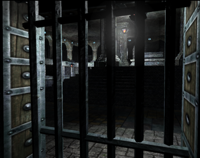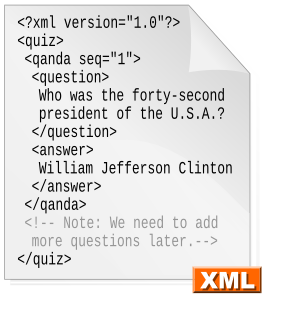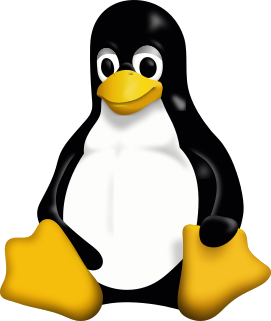
Blender is a free and open-source 3D computer graphics software toolset used for creating animated films, visual effects, art, 3D printed models, motion graphics, interactive 3D applications, and computer games. Blender's features include 3D modeling, UV unwrapping, texturing, raster graphics editing, rigging and skinning, fluid and smoke simulation, particle simulation, soft body simulation, sculpting, animating, match moving, rendering, motion graphics, video editing, and compositing.

GameMaker Studio is a cross-platform game engine developed by YoYo Games.

Houdini is a 3D animation software application developed by SideFX, based in Toronto. SideFX adapted Houdini from the PRISMS suite of procedural generation software tools. Its exclusive attention to procedural generation distinguishes it from other 3D computer graphics software.
A first-person shooter engine is a video game engine specialized for simulating 3D environments for use in a first-person shooter video game. First-person refers to the view where the players see the world from the eyes of their characters. Shooter refers to games which revolve primarily around wielding firearms and killing other entities in the game world, either non-player characters or other players.
Torque Game Engine, or TGE, is an open-source cross-platform 3D computer game engine, developed by GarageGames and actively maintained under the current versions Torque 3D as well as Torque 2D. It was originally developed by Dynamix for the 2001 first-person shooter Tribes 2. On September 2012, GarageGames released Torque 3D as open-source software under the MIT License.

CryEngine is a game engine designed by the German game developer Crytek. It has been used in all of their titles with the initial version being used in Far Cry, and continues to be updated to support new consoles and hardware for their games. It has also been used for many third-party games under Crytek's licensing scheme, including Sniper: Ghost Warrior 2 and SNOW. Warhorse Studios uses a modified version of the engine for their medieval RPG Kingdom Come: Deliverance. Ubisoft maintains an in-house, heavily modified version of CryEngine from the original Far Cry called the Dunia Engine, which is used in their later iterations of the Far Cry series.
The Maya Embedded Language (MEL) is a scripting language used to simplify tasks in Autodesk's 3D Graphics Software Maya. Most tasks that can be achieved through Maya's GUI can be achieved with MEL, as well as certain tasks that are not available from the GUI. MEL offers a method of speeding up complicated or repetitive tasks, as well as allowing users to redistribute a specific set of commands to others that may find it useful.

id Tech 3, popularly known as the Quake III Arena engine, is a game engine developed by id Software for their video game Quake III Arena. It has been adopted by numerous games. During its time, it competed with the Unreal Engine; both engines were widely licensed.
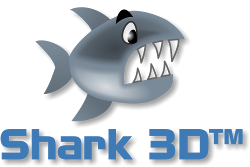
Shark 3D is a 3D software program and engine developed by Spinor for creating and running interactive virtual 3D worlds. It is used for video games, films, animated series, broadcasting graphics, and 3D industry applications.
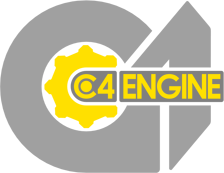
The C4 Engine was a proprietary computer game engine developed by Terathon Software that was used to create 3D games and other types of interactive virtual simulations for PlayStation 4, PlayStation 3, Windows, Mac OS X, Linux, and iOS.
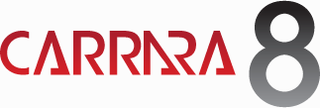
Carrara is a full-featured 3D computer graphics application featuring figure posing and editing, as well as nature modeling, in addition to traditional modeling, animation, texturing and rendering. The software is also capable of dynamic hair and fur simulations, particle effects, soft body and rigid body dynamics. Carrara is now owned and developed by DAZ 3D. Carrara is compatible with Poser and DAZ format 3D figures and props. It is further supported by a number of 3rd party plug-ins and add-ons.
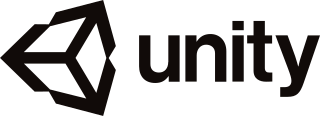
Unity is a cross-platform game engine developed by Unity Technologies, first announced and released in June 2005 at Apple Inc.'s Worldwide Developers Conference as a Mac OS X-exclusive game engine. As of 2018, the engine had been extended to support more than 25 platforms. The engine can be used to create three-dimensional, two-dimensional, virtual reality, and augmented reality games, as well as simulations and other experiences. The engine has been adopted by industries outside video gaming, such as film, automotive, architecture, engineering and construction.
ShiVa3D is a 3D game engine with a graphical editor designed to create applications and video games for desktop PCs, the web, game consoles and mobile devices. Games made with ShiVa can be exported to over 20 target platforms, with new export targets being added regularly.
Messiah is a 3D animation and rendering application developed by pmG Worldwide. It runs on the Win32 and Win64 platforms. It is marketed to run on Mac OS X and Linux via Wine. Messiah's fourth version, messiah:studio was released April 2009 and version 5.5b as messiah:animate was released November 2006. messiahStudio6 was released in April 2013. Messiah seems no longer maintained since 2013 (abandoned).
iClone is a real-time 3D animation and rendering software program that enables users to make 3D animated films. Real-time playback is enabled by using a 3D videogame engine for instant on-screen rendering.

Away3D is an open-source platform for developing interactive 3D graphics for video games and applications, in Adobe Flash or HTML5. The platform consists of a 3D world editor, a 3D graphics engine, a 3D physics engine and a compressed 3D model file format (AWD).

Source Filmmaker is a video capture and editing application that works from inside the Source game engine. The tool, created by Valve Corporation, was used to create over 50 animated shorts for its Source games, including Team Fortress 2, the Left 4 Dead series, and Half-Life 2. On June 27, 2012, Valve released a free open beta version of the SFM to the gaming community via its Steam service.

Godot is a free and open-source game engine released under the MIT license. It was initially developed for several companies in Latin America before its public release. The development environment runs on Windows, macOS, and Linux. It can create games for PCs, mobile devices and the Web platform.

